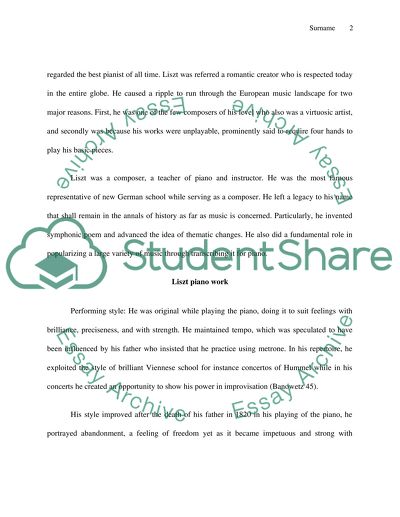Cite this document
(“Comparing Liszt piano works to Chopin piano works Research Paper”, n.d.)
Comparing Liszt piano works to Chopin piano works Research Paper. Retrieved from https://studentshare.org/music/1594232-comparing-liszt-piano-works-to-chopin-piano-works
Comparing Liszt piano works to Chopin piano works Research Paper. Retrieved from https://studentshare.org/music/1594232-comparing-liszt-piano-works-to-chopin-piano-works
(Comparing Liszt Piano Works to Chopin Piano Works Research Paper)
Comparing Liszt Piano Works to Chopin Piano Works Research Paper. https://studentshare.org/music/1594232-comparing-liszt-piano-works-to-chopin-piano-works.
Comparing Liszt Piano Works to Chopin Piano Works Research Paper. https://studentshare.org/music/1594232-comparing-liszt-piano-works-to-chopin-piano-works.
“Comparing Liszt Piano Works to Chopin Piano Works Research Paper”, n.d. https://studentshare.org/music/1594232-comparing-liszt-piano-works-to-chopin-piano-works.


